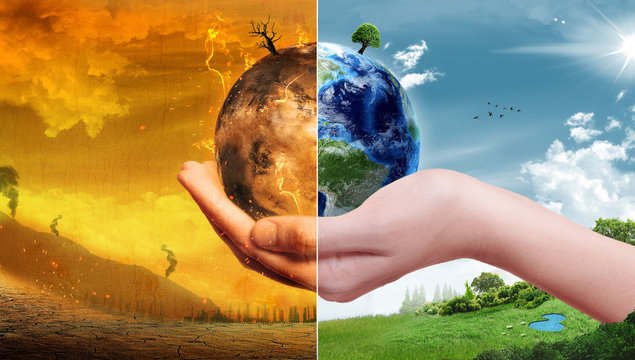Causes of Global Warming
The primary driver of global warming is the increase in greenhouse gas emissions resulting from human activities. The combustion of fossil fuels—such as coal, oil, and natural gas—for electricity and heat production is the largest contributor, accounting for over 75% of global greenhouse gas emissions and nearly 90% of all carbon dioxide emissions. (un.org)
Deforestation also plays a significant role. Trees act as carbon sinks, absorbing carbon dioxide from the atmosphere. When forests are cleared for agriculture or urban development, the stored carbon is released, and the capacity to absorb future emissions is diminished. (un.org)
Industrial processes, including cement production and chemical manufacturing, emit substantial amounts of greenhouse gases. Additionally, agricultural practices, such as livestock farming, release methane, a potent greenhouse gas. (un.org)
Effects of Global Warming
Rising Temperatures
Global surface temperatures have risen significantly, with the last decade (2011-2020) being the warmest on record. This warming trend leads to more frequent and intense heatwaves, affecting human health and agriculture. (un.org)
Extreme Weather Events
The warming atmosphere holds more moisture, leading to more severe storms, hurricanes, and typhoons. These events result in loss of life, property damage, and economic disruption. (un.org)
Sea-Level Rise
Melting polar ice caps and the thermal expansion of seawater contribute to rising sea levels, threatening coastal communities with increased flooding and erosion. (un.org)
Ecosystem Disruption
Changes in temperature and precipitation patterns disrupt habitats, leading to biodiversity loss and challenges for species adaptation. (un.org)
Ocean Acidification
The absorption of excess carbon dioxide by oceans increases their acidity, adversely affecting marine life, including coral reefs and shellfish. (un.org)
Mitigation Strategies
Transition to Renewable Energy
Shifting from fossil fuels to renewable energy sources like solar, wind, and hydroelectric power reduces greenhouse gas emissions. In 2020, onshore wind and solar photovoltaics became the cheapest sources for new bulk electricity generation in many regions. (en.wikipedia.org)
Energy Efficiency
Improving energy efficiency in buildings, transportation, and industrial processes can significantly reduce energy consumption and emissions. (enviroliteracy.org)
Carbon Capture and Storage (CCS)
CCS technologies capture carbon dioxide emissions from industrial sources and store them underground, preventing their release into the atmosphere. The IPCC estimates that the costs of halting global warming would double without CCS. (en.wikipedia.org)
Reforestation and Afforestation
Planting trees and restoring forests enhance carbon sequestration, absorbing carbon dioxide from the atmosphere and mitigating climate change. (enviroliteracy.org)
Policy and Regulation
Implementing strong climate policies, such as carbon pricing, emissions standards, and incentives for renewable energy, is essential for driving systemic change. This involves both national and international cooperation. (enviroliteracy.org)
Adaptation Measures
Water Management
Improving water management practices, such as rainwater harvesting and drought-resistant crops, can help communities adapt to water scarcity. (enviroliteracy.org)
Infrastructure Resilience
Investing in infrastructure that is more resilient to extreme weather events, such as building flood defenses and strengthening buildings against storms, is critical. (enviroliteracy.org)
Climate-Smart Agriculture
Adapting agricultural practices to climate change through the use of drought-resistant crops and improved soil management can reduce the vulnerability of the agricultural sector. (enviroliteracy.org)
Public Health Measures
Developing heatwave response plans and improving disease surveillance are essential for protecting public health from the impacts of climate change. (enviroliteracy.org)
Ecosystem-Based Adaptation
Protecting and restoring ecosystems, such as wetlands and forests, can enhance resilience to climate change and provide multiple benefits, such as flood control and biodiversity conservation. (enviroliteracy.org)
